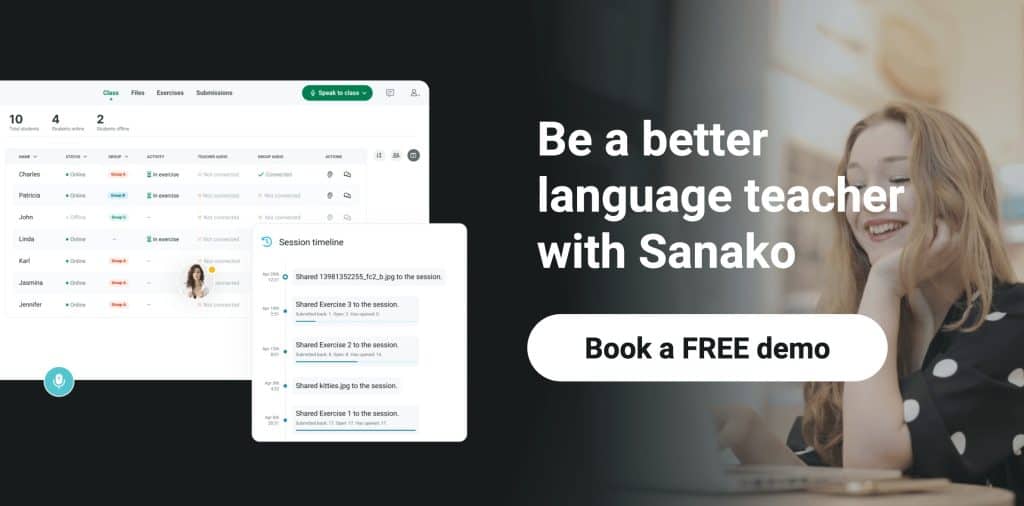A key part of successfully learning a language is being able to understand the culture and environment behind it. After all, according to Britannica, any language is a “system of conventional spoken or written symbols used by people in a shared culture to communicate with each other.”
Each language both influences and reflects the societies it is being used in. In history, this has been particularly true when different language communities came into contact with each other through conflict, trade or travel.
As a result, many different languages such as Dutch, German and Swedish actually have common features and histories. They are therefore classed as being members of the same language family. This blog post will therefore explore the concept of the language family; it will look at some of the major global language families and explore how this might influence best pedagogical teaching practice.
What is a language family?
Perhaps the simplest definition of a language family is that it refers to a group of languages that share a common ancestor or proto-language. Some of the world’s largest language families are introduced below.
Languages within each family share some key grammatical features and vocabulary, even if this is often not immediately apparent. There are, for example, a number of similarities between English and Hindi (both from the Indo-European language family) including some vocabulary and the need to have a verb in every sentence.
Over time, languages from the same family become more differentiated as their speakers move apart and are isolated from each other. Eventually, each separate language begins to look and sound very different!
Language families, like any other family, are often thought of as a tree, with the trunk as the common core from which the others grow. Language families are further subdivided into branches that were created after splitting from the family’s common ancestor. Each branch shares more similarities with each other than with languages belonging to other branches in the family.
There are also a small number of languages that cannot be classified into a language family. They are known as language isolates and Basque is the most commonly cited / well-known example. Such languages are unrelated to any others, so form their own language family without any evident genealogical ties.
Indo-European Language Family
The Indo-European language family is native to the vast majority of Europe, large parts of the Middle East and north Indian subcontinent. It includes many of the world’s most familiar languages including Bengali, English, French, German, Hindi–Urdu, Persian, Punjabi, Portuguese, Russian and Spanish. Of course, some of these languages expanded significantly through colonialism and are now spoken across different continents.
The Indo-European family is divided into several branches or sub-families and there are eight language branches still alive today: Albanian, Armenian, Balto-Slavic, Celtic, Germanic, Hellenic, Indo-Iranian, and Italic. Another six branches have been identified but are now classified as extinct.
Over 40% of the world’s population (3.2 billion people) speaks an Indo-European language as a first language — that’s the highest of any language family.
The Sino-Tibetan language family
Second only to the Indo-Europeans, the Sino-Tibetan language family is one of the largest and fastest growing in the world. It is spoken by over 1.2 billion people and consists of over 400 very different individual languages spread across a vast geographic area. Sino-Tibetan languages are also known as Trans-Himalayan.
As its name suggests, the family is made up of two main branches. Sino refers to the various Chinese (Sinitic) languages and dialects – this is the largest single language branch in the world. Mandarin and Cantonese are the most widely-spoken of these. Tibeto-Burman languages are spoken in southern China and across other countries of Southeast Asia. Tibetan and Burmese are the most commonly spoken.
The Niger-Congo language family
Given its geographic spread across most of Sub-Saharan Africa, the Niger-Congo language family is unsurprisingly the largest in Africa and one of the world’s largest. It includes over 1,500 different languages (including Igbo, Swahili and Yoruba) that are spoken by over 600 million people and nearly 90% of the continent’s population.
The Austronesian language family
Although only the fourth largest language family in the world, it represents an astonishing 20% of all languages spoken globally. It includes most of the languages spoken across the Pacific Islands with the exception of the indigenous Papuan and Australian languages. Family languages are used throughout Oceania, Southeast Asia and some of mainland Asia. The most common Austronesian languages include Javanese, Malay and Tagalog.
How do I teach different language families?
There’s no hard and fast rules about which teaching approaches are best suited to each of the major language families outlined above. Of course, there are many similarities between languages in each family, but there are significant differences to be aware of. In grammar, tonality, writing systems and vocabulary, for example.
The safest course of action is to start with the internationally-recognised best practice approaches in language teaching. These include Communicative language teaching (CLT), Content and language integrated learning (CLIL), Cooperative Language Learning (CLL) and Task-based language teaching (TBLT). They’re all summarised in an earlier blog post here.
As ever it’s worth noting that none of these approaches should be considered the best for any one language family since every classroom, educator and student is different. Our advice is rather that educators should try them out, tailoring them to their specific context and reviewing the impact they have.
It’s therefore vital for educators to use flexible language teaching solutions that work across the range of different languages being taught at your institution. Sanako Connect is well positioned to help.
How can Sanako help?
Tools like Sanako Connect offer a blended teaching platform that combines the best parts of virtual classroom solutions and language labs. Connect has also been specifically designed to help educators improve students’ language skills regardless of the language being studied. Connect supports teachers by:
- Enabling text entry in the vast majority of Unicode and RTL languages.
- Effortlessly handling content in any language – whether that’s audio material educators have created / sourced or PDFs, presentations, video files and webpages that they’ve uploaded
- Giving students access to the exercises / resources from any location with internet access, at any time and using any device, including laptops, Chromebooks, tablets or smartphones.
- Assigning specific exercises to specific students to demonstrate their language fluency. Learning resources can be clearly differentiated and personalised to individual students.
- Providing detailed feedback via Connect’s feedback functionality. Students can immediately see where improvements need to be made. They can then relisten to the original audio material and record additional attempts.
If you’d like to find out how Sanako Connect could help you develop your students’ core language skills across the full range of global languages, please contact us now to arrange your FREE demo!

